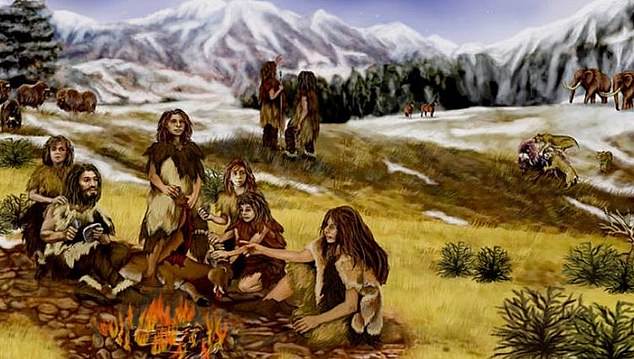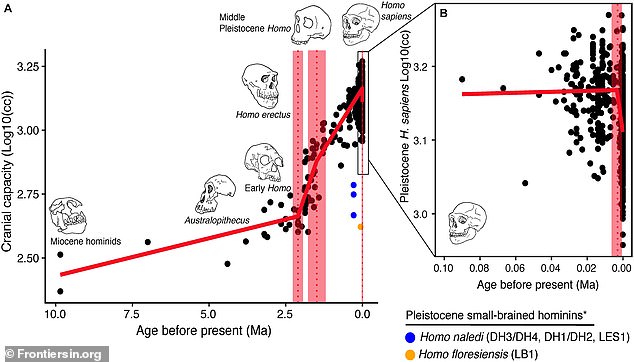Human Brains Decreased in Size 3,000 Years Ago, New Study Says
The size of the human brain has changed numerous times throughout human history. Still, the vital organ decreased approximately 3,000 years ago due to a rise of social circles, a new study finds.
American researchers analyzed 985 fossilized and modern human brains and observed a size increase 2.1 million years ago and again 1.5 million years ago. Still, a decrease was identified during the Holocene era about 12,000 years ago.

During this time, ancient humans began to form social circles where knowledge was shared. Individuals were specialists at specific tasks, which made the brain more efficient and decreased in size.
The hypothesize is that ancient humans required less brain energy to store information, which resulted in their brains shrinking, which suggests modern human’s brains could be even smaller due to technologies keeping everything we need to know.
Dr. James Traniello, from Boston University and co-author of the study, said in a statement: ‘We propose that this decrease was due to increased reliance on collective intelligence, the idea that a group of people is smarter than the smartest person in the group, often called the ‘wisdom of the crowds.’
Despite this recent decrease, the human brain has nearly quadrupled in size over the last 6 million years since Homo last shared a common ancestor with chimpanzees. Still, human brains are thought to have decreased in volume since the end of the last Ice Age,’ the authors wrote in the study published in Frontiers in Ecology and Evolution.
To uncover the reason for changes in the brain, researchers used a change-point analysis and found size increases that occurred millions of years ago coincided with the early evolution of Homo and technological advances.

Dr. Jeremy DeSilva, from Dartmouth College and co-author of the study, said in a statement: ‘A surprising fact about humans today is that our brains are smaller compared to the brains of our Pleistocene ancestors.
‘Why our brains have reduced in size has been a big mystery for anthropologists.’
To solve this big mystery, the team analyzed historical patterns of human brain evolution, comparing their findings with what is known in ant societies to offer broad insights.
‘A biological anthropologist, behavioral ecologist, and evolutionary neurobiologist began sharing their thoughts on brain evolution and found that bridging research on humans and ants might help identify what is possible in nature,’ said Traniello.
Studying computational models and patterns of worker ant brain size, structure, and energy use in some ant clades, such as the Oecophylla weaver ant, Atta leafcutter ants, or the common garden ant Formica, showed that group-level cognition and division of labor might select for adaptive brain size variation.
‘Ant and human societies are very different and have taken different routes in social evolution,’ Traniello said.
‘Nevertheless, ants also share with humans essential aspects of social life such as group decision-making and division of labor, as well as the production of their food (agriculture).
‘These similarities can broadly inform us of the factors that may influence changes in human brain size.’
The researchers explain that smaller brains use less energy. Because ancient humans began sharing knowledge 3,000 years ago, their brains needed less energy to store loads of information – thus resulting in a decrease in size.
‘We propose that this decrease was due to increased reliance on collective intelligence, the idea that a group of people is smarter than the smartest person in the group, often called the ‘wisdom of the crowds,’ said Traniello.



